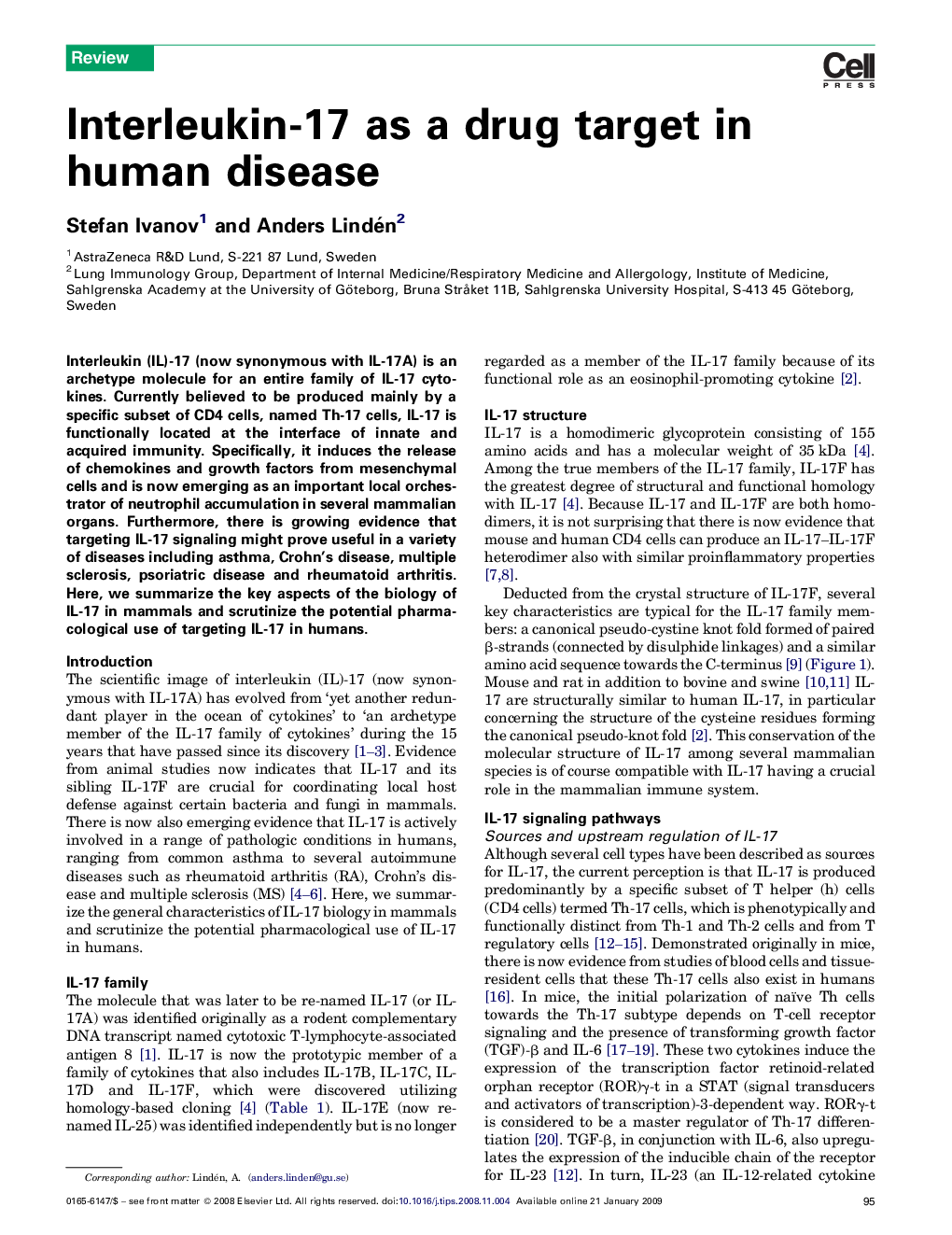| Article ID | Journal | Published Year | Pages | File Type |
|---|---|---|---|---|
| 2573511 | Trends in Pharmacological Sciences | 2009 | 9 Pages |
Interleukin (IL)-17 (now synonymous with IL-17A) is an archetype molecule for an entire family of IL-17 cytokines. Currently believed to be produced mainly by a specific subset of CD4 cells, named Th-17 cells, IL-17 is functionally located at the interface of innate and acquired immunity. Specifically, it induces the release of chemokines and growth factors from mesenchymal cells and is now emerging as an important local orchestrator of neutrophil accumulation in several mammalian organs. Furthermore, there is growing evidence that targeting IL-17 signaling might prove useful in a variety of diseases including asthma, Crohn's disease, multiple sclerosis, psoriatric disease and rheumatoid arthritis. Here, we summarize the key aspects of the biology of IL-17 in mammals and scrutinize the potential pharmacological use of targeting IL-17 in humans.
